I garden a bit differently than most. Most of my garden is in pots. I do this primarily to conserve water. It also allows for easy weeding, plant isolation, and soil experimentation. Gardening in pots allows me to garden under trees. In my area, willow shade will reduce the brunt of summer quite well, making the garden enjoyable instead of unbearable.
The big expense gardening this way is potting soil. Not so bad really, the single month, summer water bill for conventional gardening vs gardening they way I am doing it, will easily pay for a years potting soil.
When I set up a garden pot, I try to use 3 gallon or larger pots. I stuff the bottom third with leaves to keep the soil from draining out with the water. Then I add my planting mix.
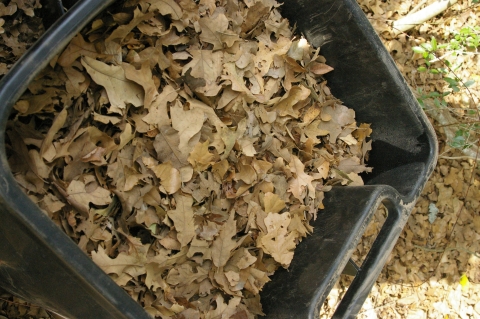
Here is enough soil to fill 20 3 gallon pots.
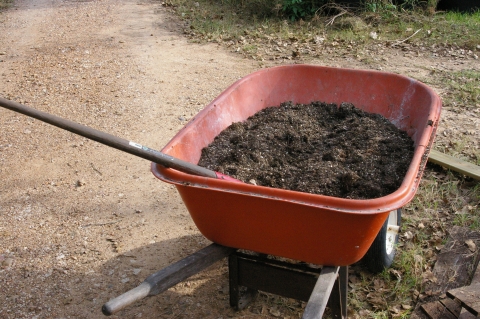
My mix Starts with spent mushroom dirt. For some plants, it end with that. My Celery loves mushroom dirt straight up. Daikon radishes will do fine in it as long as I supplement the potassium levels just a bit.

As a disclaimer, when you get a truck load of mushroom dirt, you often get a very rich smell. You can also get a bunch of flies for a while. This is a price I am willing to pay.

For potassium, I use Green Sand. This is 1% slow release. This maintains a decent level of potassium in the pots. This helps the roots develop, and makes the veggies better sources of potassium. In potting soil, potassium is usually the first thing to wash out. So a long term addition is a good thing.
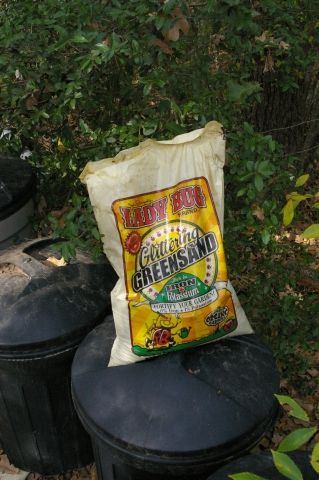
Also quick to wash out of a pot, is calcium. Not having enough calcium will give brown spots at the bottom of tomatoes, blossom end rot, and will produce vegetables with less calcium. So for healthy plants and healthy people who eat the plants, a good calcium supply is needed. I try to incorporate some crushed limestone chicken grit. As you can see in the photo, I am almost out. This is nice slow release calcium. Not as slow as you might think however, it is often quite gone after two years.
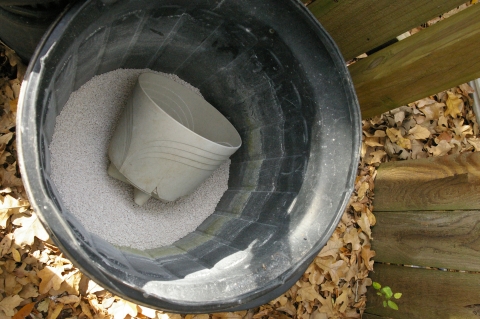
For a quick hit of calcium or a dressing for plants, or to balance a low PH, I will used crushed agricultural limestone. The strainer is for spreading it on the surface of beds, and sprinkling on leaves. Some plants will absorb it from the leaves, and some insects, not as many as I would like, find it repellent.
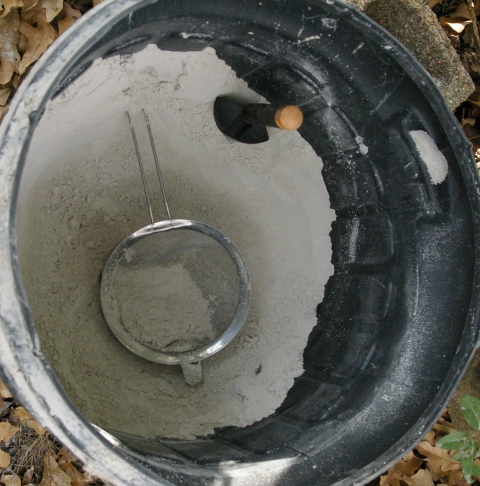
A lot of plants will do fine in fine soil, but a lot of plants do better if they have a courser soil or more air space in the soil. This can be a problem, since the soil can dry out easily. Two common additions to soil can help give air space while retaining moist soil. Vermiculite and Pearlite.
Vermiculite

Pearlite
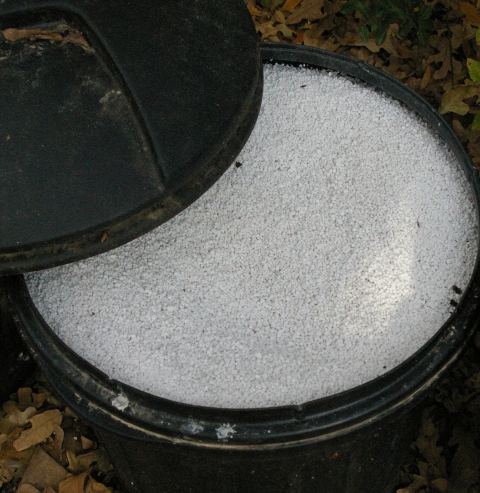
Pearlite is volcanic glass that has been heated under pressure. The sudden release of pressure makes it puff up like popcorn. This is fairly inexpensive if you buy it in a huge, yet far from heavy bag. It is still one of the larger expenses when you pot a lot. This is great stuff. I suspect the silica provided help some plants to be healthier and thus help us be healthier when living on them. I prefer to avoid it when growing root vegetables, as some can get included in the root and give a bit of a gritty feel to some root vegetables.
Vermiculite is a touch more expensive and not quite as light. It does not provide quite as good an air channel structure as pearlite, but it helps with moisture and nutrient retention better. For root vegetables this is a wonderful thing to add. I find I need to add more of it to get a good mix, than when I use pearlite. Vermiculite is Weathered Mica, that has been expanded the same way that pearlite has been expanded.
I always try to save a bit of mushroom dirt for later emergency use. The mound of mushroom dirt becomes a garden plot after it gets reduced to the right height, so by doing this, I don’t have to get as many loads over time.
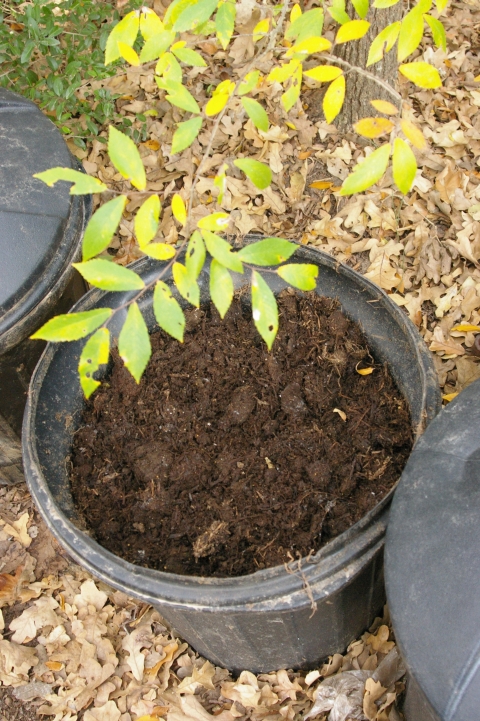
Peat Moss is also a good addition, It increases the soils ability to breath, and acidifies the soil a bit. This can compensate for the calcium supplement added to the soil. It promotes the growth of healthy root in several ways, and helps give a good texture to the soil.
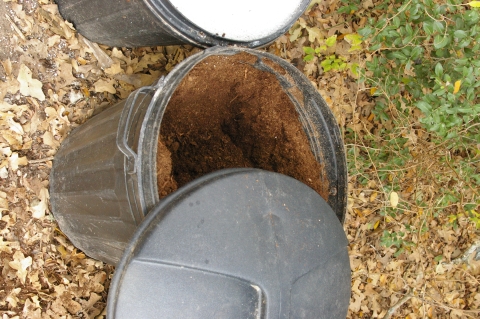
My standard mix is about 15 parts mushroom dirt, 5 of pearlite, 4 of peat moss, 1 of crushed Limestone, 1 of Limestone Chicken Grit, and 1 of Green Sand. This is usually done by the shovel full and mixed in a wheelbarrow.
I also take a 1/8″ screen and sift a bunch through it. The course soil left is great for growing. The fine stuff I save and uses as a starting mix for young plants I want to treat carefully.
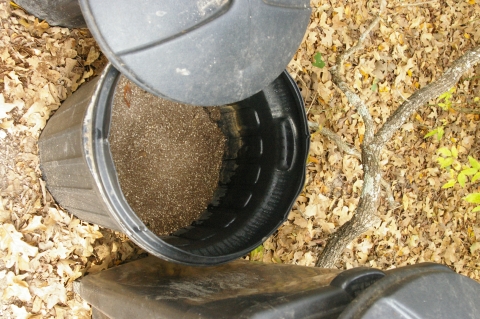
Bob





















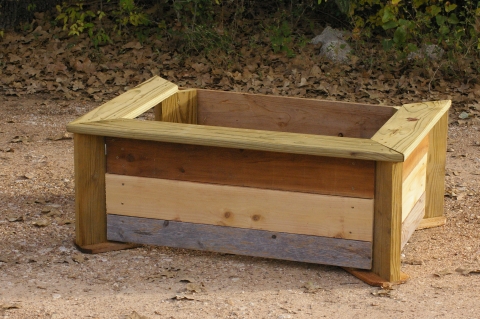
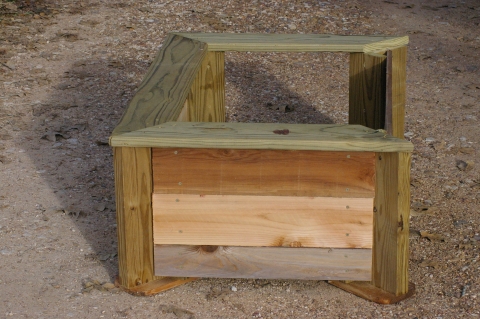


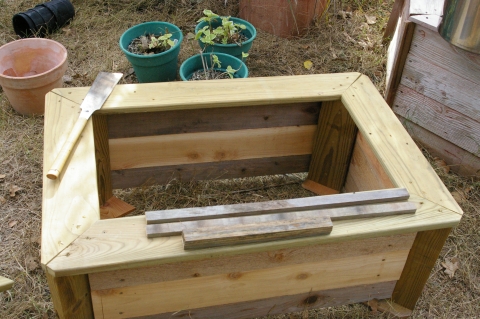



 A page Dedicated to My Writing
A page Dedicated to My Writing
Recent Comments